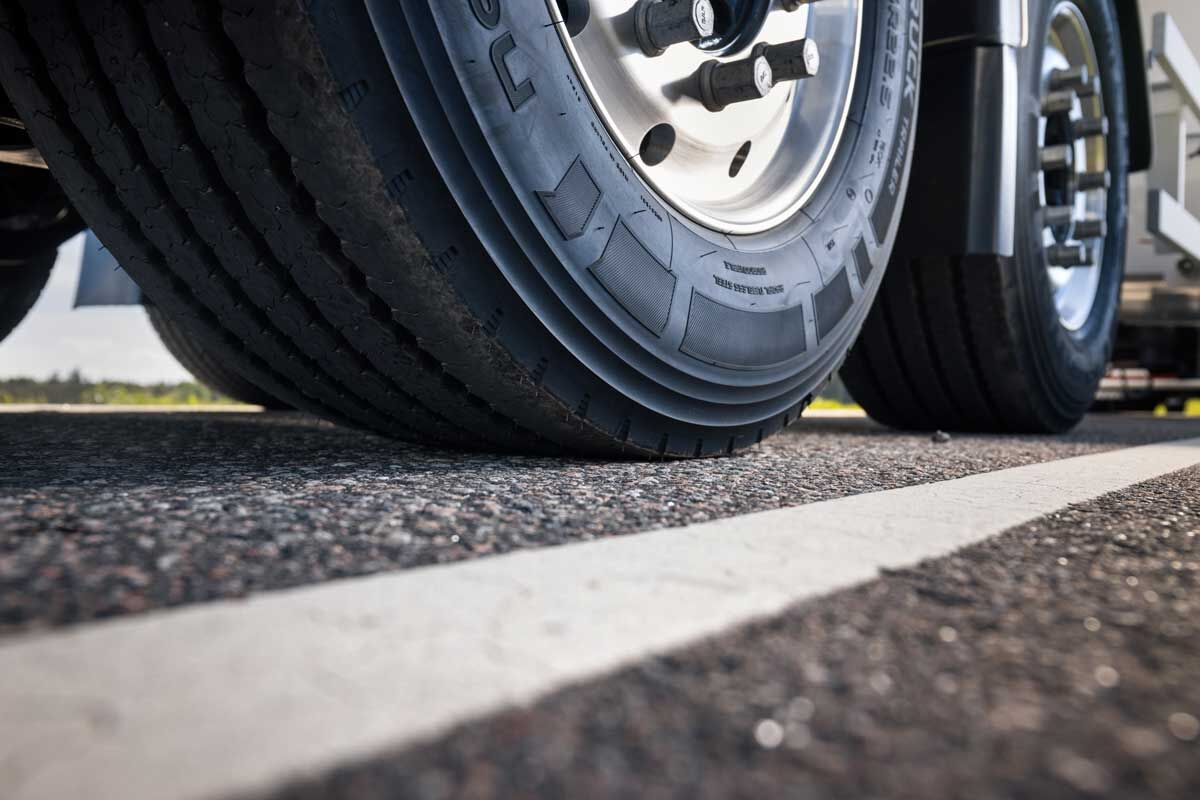
Like other tire dimensions, the aspect ratio plays a role in determining the tire's performance and suitability for various applications. Together with other qualities of commercial tires, the aspect ratio affects the tire's height, load-carrying capacity, and maneuverability, which are all the more important when operating heavy commercial vehicles..
What is a tire’s aspect ratio?
The tire aspect ratio refers to the relationship between a tire sidewall’s height and its width. Tire markings indicate the aspect ratio as the second number following a slash symbol, telling you the height of a sidewall as a percentage tire's width.
For instance, a tractor tire with a marking 295/80R22.5 has an aspect ratio of 80%. In other words, the height of the sidewall is 80% of the tire's width.
You can calculate the tire aspect ratio with the following formula:
(sidewall height/tire width) X 100

Interpreting tire size
Tire aspect ratio is only one of many markings you need to interpret a tire’s dimensions and other qualities. Using our example above, let’s look at all the markings you need to know:
- 295 is the tire’s width in millimeters. This translates to approximately 11.6 inches.
- 80 the tire aspect ratio, expressing the height of the tyre in relation to its section width.
- The letter R signifies the tire’s construction. In this example, it is a radial tire. The radial construction is common in a host of commercial and passenger vehicle tires. Other alternatives are diagonal and bias-belted tires (indicated with a “-” and “B” symbols respectively).
- 22.5 tells you the tire diameter in inches.
In addition to tire dimensions, you can find other information marked to the tire sidewall, such as the tire’s load index and speed rating.
The importance of correct tire width and height
Why does using tires with the appropriate aspect ratio and other dimensions matter? Safety and performance are the key factors in choosing the right tires for any operation, whether transporting heavy cargo or working on a farm or forest. Some benefits of appropriately sized commercial tires include:
- Improved maneuverability
- Better load-bearing capacity
- Increased driving comfort
- Improved fuel efficiency and economy
- Longer service life and more even tire wear
- Improved safety and reduced risk of tire damage
Besides using the right tire size, check that the inflation pressures are correct and adjusted according to the conditions and application of your heavy machinery. Adjustments to tire pressure are needed in colder temperatures and when operating on particularly soft or hard surfaces.
For instance, underinflation can lead to tire wear and damage to the tire carcass and sidewall. Additionally, the tire’s maximum load-bearing capacity applies only when the inflation pressure is correct. Meanwhile, overinflation reduces the tire’s grip and shock absorption capacity.
Please remember that it is the driver’s responsibility to ensure their tires are safe and suitable for their vehicle and to follow the vehicle’s manufacturer´s guidelines for proper use and maintenance. Consult your closest Nokian Tyres dealer or your vehicle’s manufacturer for specific advice.


